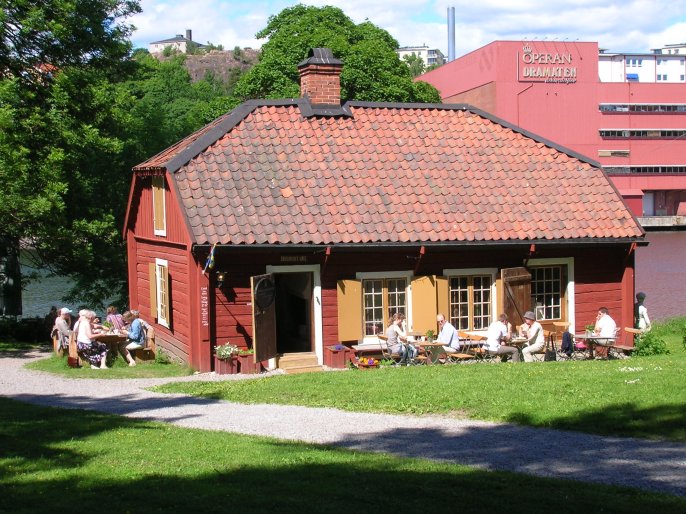|
Heath Hall, Heath, West Yorkshire
Heath Hall, Heath, Wakefield, West Yorkshire is a country house dating from 1709. Originally called Eshald House, the estate was purchased by John Smyth whose nephew engaged John Carr of York to reconstruct the house between 1754 and 1780. In the 19th century, the house was remodelled by Anthony Salvin. Heath House is a Grade I listed building. History The original hall, called Eshald House, was built for, and probably designed by, Theophilus Shelton. In 1709 the estate was bought by John Smyth, who had made a considerable fortune as a wool trader. In 1754 his nephew, also John, commissioned John Carr to undertake a major expansion of the house. Work continued under Smyth's grandson, another John, until completion in 1780. The resulting mansion is described by Historic England as "a magnificent composition, one of arr'sfinest houses". The Smyths established their place in society during construction, the grandson serving as member of parliament for Pontefract for 25 years, beco ... [...More Info...] [...Related Items...] OR: [Wikipedia] [Google] [Baidu] |
The Bishops Avenue
The Bishops Avenue, London N2, connects the north side of Hampstead Heath at Kenwood (Hampstead Lane), Hampstead to East Finchley and is on the boundary between the London Boroughs of Barnet and Haringey. It is considered to be one of the wealthiest streets in the world. The road is often referred to by its nickname of "Billionaires' Row". The 66-house street runs downhill north–south and with the parallel Winnington Road displays a variety of architectural styles. Average property prices on the avenue surpassed £1 million in the late 1980s and each property occupies a 2–3-acre plot.New London Property Guide In 2006, the smallest houses in the street were selling for £5 million while a larger house, Turkish tycoon Halis Toprak's Toprak Mansion, sold amidst great secrecy to the president of Kazakhstan, Nursultan Nazarbayev, for £50 million in January 2008, making it one of the most expensive houses in the world, as listed by ''Forbes'' magazine. Homes on the street ... [...More Info...] [...Related Items...] OR: [Wikipedia] [Google] [Baidu] |
Grade I Listed Buildings In West Yorkshire
There are over 9,000 Grade I listed buildings in England. This page is a list of these buildings in the county of West Yorkshire West Yorkshire is a metropolitan and ceremonial county in the Yorkshire and Humber Region of England. It is an inland and upland county having eastward-draining valleys while taking in the moors of the Pennines. West Yorkshire came into exi ..., by metropolitan district. Bradford Calderdale Kirklees Leeds Wakefield See also * :Grade I listed buildings in West Yorkshire * Grade II* listed buildings in West Yorkshire Notes SourcesNational Heritage List for England References External links {{GradeIListedbuilding ... [...More Info...] [...Related Items...] OR: [Wikipedia] [Google] [Baidu] |
Brewhouse
A brewhouse is a building made for brewing beer and ale. This could be a part of a specialized brewery operation, but historically a brewhouse is a private building only meant for domestic production. Larger households, such as noble estates, often had dedicated brewhouses that could be quite elaborate using equipment not too different from that of commercial breweries. English country house An English country house is a large house or mansion in the English countryside. Such houses were often owned by individuals who also owned a town house. This allowed them to spend time in the country and in the city—hence, for these peopl ...s have detailed records of brewhouses. In ordinary farming households brewing was in some regions done outside, particularly in summer. The Baltic countries have a concept of a "summer kitchen", which is basically an outdoor area used for cooking and brewing in summer, but brewing could also be done outside in parts of Norway and Sweden as wel ... [...More Info...] [...Related Items...] OR: [Wikipedia] [Google] [Baidu] |
Victorian Era
In the history of the United Kingdom and the British Empire, the Victorian era was the period of Queen Victoria's reign, from 20 June 1837 until her death on 22 January 1901. The era followed the Georgian period and preceded the Edwardian period, and its later half overlaps with the first part of the '' Belle Époque'' era of Continental Europe. There was a strong religious drive for higher moral standards led by the nonconformist churches, such as the Methodists and the evangelical wing of the established Church of England. Ideologically, the Victorian era witnessed resistance to the rationalism that defined the Georgian period, and an increasing turn towards romanticism and even mysticism in religion, social values, and arts. This era saw a staggering amount of technological innovations that proved key to Britain's power and prosperity. Doctors started moving away from tradition and mysticism towards a science-based approach; medicine advanced thanks to the adoption ... [...More Info...] [...Related Items...] OR: [Wikipedia] [Google] [Baidu] |
Jill Allibone
Jill Spencer Allibone (26 April 1932 – 3 February 1998) was an English architectural historian and the founder of the Mausolea and Monuments Trust. She wrote studies of Anthony Salvin and George Devey, and was a justice of the peace for over 20 years. Early life Allibone was born Jill Spencer Rigden in Abadan,"Victorian values" by Andrew Saint in ''The Guardian'', 10 February 1998, p. 14. Iran, on 26 April 1932, where her father, Horace Walter Rigden, managed the Anglo-Persian oil refinery. She spent her youth in Iran apart from a period during the Second World War where she was evacuated to South Africa. She was educated at Godolphin School, Salisbury, and then St Martin's School of Art. In 1954 she joined the Courtauld InstituteObituary: Jill Allibone. Hermione Hobhouse, '' |
Drawing Room
A drawing room is a room in a house where visitors may be entertained, and an alternative name for a living room. The name is derived from the 16th-century terms withdrawing room and withdrawing chamber, which remained in use through the 17th century, and made their first written appearance in 1642. In a large 16th to early 18th century English house, a withdrawing room was a room to which the owner of the house, his wife, or a distinguished guest who was occupying one of the main apartments in the house could "withdraw" for more privacy. It was often off the great chamber (or the great chamber's descendant, the state room) and usually led to a formal, or "state" bedroom. In modern houses, it may be used as a convenient name for a second or further reception room, but no particular function is associated with the name. History and development In 18th-century London, the royal morning receptions that the French called ''levées'' were called "drawing rooms", with the sense ori ... [...More Info...] [...Related Items...] OR: [Wikipedia] [Google] [Baidu] |
Pevsner Architectural Guides
The Pevsner Architectural Guides are a series of guide books to the architecture of Great Britain and Ireland. Begun in the 1940s by the art historian Sir Nikolaus Pevsner, the 46 volumes of the original Buildings of England series were published between 1951 and 1974. The series was then extended to Scotland, Wales and Ireland in the late 1970s. Most of the English volumes have had subsequent revised and expanded editions, chiefly by other authors. The final Scottish volume, ''Lanarkshire and Renfrewshire'', was published in autumn 2016. This completed the series' coverage of Great Britain, in the 65th anniversary year of its inception. The Irish series remains incomplete. Origin and research methods After moving to the United Kingdom from his native Germany as a refugee in the 1930s, Nikolaus Pevsner found that the study of architectural history had little status in academic circles, and that the amount of information available, especially to travellers wanting to inform themsel ... [...More Info...] [...Related Items...] OR: [Wikipedia] [Google] [Baidu] |
Plasterwork
Plasterwork is construction or ornamentation done with plaster, such as a layer of plaster on an interior or exterior wall structure, or plaster decorative moldings on ceilings or walls. This is also sometimes called pargeting. The process of creating plasterwork, called plastering or rendering, has been used in building construction for centuries. For the art history of three-dimensional plaster, see stucco. History The earliest plasters known to us were lime-based. Around 7500 BC, the people of 'Ain Ghazal in Jordan used lime mixed with unheated crushed limestone to make plaster which was used on a large scale for covering walls, floors, and hearths in their houses. Often, walls and floors were decorated with red, finger-painted patterns and designs. In ancient India and China, renders in clay and gypsum plasters were used to produce a smooth surface over rough stone or mud brick walls, while in early Egyptian tombs, walls were coated with lime and gypsum plaster and the f ... [...More Info...] [...Related Items...] OR: [Wikipedia] [Google] [Baidu] |
Rococo
Rococo (, also ), less commonly Roccoco or Late Baroque, is an exceptionally ornamental and theatrical style of architecture, art and decoration which combines asymmetry, scrolling curves, gilding, white and pastel colours, sculpted moulding, and ''trompe-l'œil'' frescoes to create surprise and the illusion of motion and drama. It is often described as the final expression of the Baroque movement. The Rococo style began in France in the 1730s as a reaction against the more formal and geometric Louis XIV style. It was known as the "style Rocaille", or "Rocaille style". It soon spread to other parts of Europe, particularly northern Italy, Austria, southern Germany, Central Europe and Russia. It also came to influence the other arts, particularly sculpture, furniture, silverware, glassware, painting, music, and theatre. Although originally a secular style primarily used for interiors of private residences, the Rococo had a spiritual aspect to it which led to its widespread use ... [...More Info...] [...Related Items...] OR: [Wikipedia] [Google] [Baidu] |
Slate
Slate is a fine-grained, foliated, homogeneous metamorphic rock derived from an original shale-type sedimentary rock composed of clay or volcanic ash through low-grade regional metamorphism. It is the finest grained foliated metamorphic rock. Foliation may not correspond to the original sedimentary layering, but instead is in planes perpendicular to the direction of metamorphic compression. The foliation in slate is called " slaty cleavage". It is caused by strong compression causing fine grained clay flakes to regrow in planes perpendicular to the compression. When expertly "cut" by striking parallel to the foliation, with a specialized tool in the quarry, many slates will display a property called fissility, forming smooth flat sheets of stone which have long been used for roofing, floor tiles, and other purposes. Slate is frequently grey in color, especially when seen, en masse, covering roofs. However, slate occurs in a variety of colors even from a single locality; for e ... [...More Info...] [...Related Items...] OR: [Wikipedia] [Google] [Baidu] |
Ashlar
Ashlar () is finely dressed (cut, worked) stone, either an individual stone that has been worked until squared, or a structure built from such stones. Ashlar is the finest stone masonry unit, generally rectangular cuboid, mentioned by Vitruvius as opus isodomum, or less frequently trapezoidal. Precisely cut "on all faces adjacent to those of other stones", ashlar is capable of very thin joints between blocks, and the visible face of the stone may be quarry-faced or feature a variety of treatments: tooled, smoothly polished or rendered with another material for decorative effect. One such decorative treatment consists of small grooves achieved by the application of a metal comb. Generally used only on softer stone ashlar, this decoration is known as "mason's drag". Ashlar is in contrast to rubble masonry, which employs irregularly shaped stones, sometimes minimally worked or selected for similar size, or both. Ashlar is related but distinct from other stone masonry that i ... [...More Info...] [...Related Items...] OR: [Wikipedia] [Google] [Baidu] |







